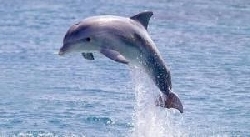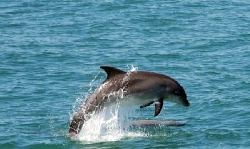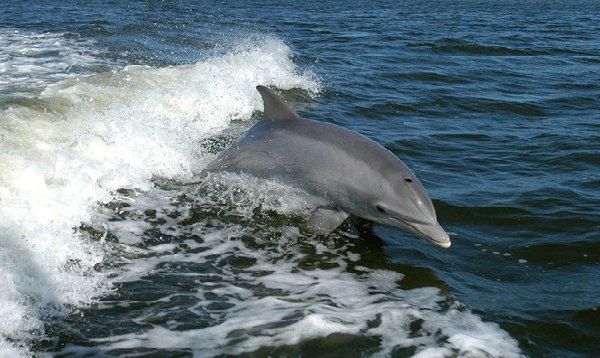Pensacola, Florida — An unusually high number of dolphin deaths that began three years ago in the northern Gulf of Mexico is continuing, although the number of deaths in Florida peaked in 2011.
Since February of 2010 the bodies of 830 marine mammals, nearly all bottlenose dolphins and a few whales, have been found along the coast from Louisiana to Apalachicola, Florida according to figures from the National Oceanic and Atmospheric Administration.
Of those, almost 150 dolphins found dead on beaches or in marshes were premature, stillborn, or neonatal bottlenose. In the seven years before 2010, the northern Gulf each year saw an average of 63 bottlenose dolphin strandings, incidents where injured or sick marine mammals come ashore.
That the number of dolphin deaths continues to be higher than before 2010 worries Teri Rowles, who heads NOAA's investigation team. "This is the longest unusual mortality event nationally," she said of the dolphin deaths.
The dolphin deaths began their climb before the Deepwater Horizon disaster April 20, 2010, but the oil spill is being considered as a cause. Bacteria and biotoxins, such as red tide, also are being investigated as factors contributing to the deaths.
Scientists don't know the full scope of the die-off because they rely on field reports of deaths. Not all dead dolphins wash up on populated beaches and waterways where they can be recovered, so many deaths may be going uncounted.
 |
Bacteria Culprit
In the fall of 2011, NOAA scientists confirmed that brucella bacteria killed five dolphins found off of the coast of Louisiana and as of Dec. 9, some 13 out of 56 stranded dolphins tested positive or were suspected positive for brucella.
Many of the dolphins found dead are too decomposed to test for the bacteria, Rowles said. Scientists are looking deeply into whether brucella, a common bacteria also found in livestock, has become more lethal in dolphins in the northern Gulf.
Brucella in marine mammals was first recognized in the 1990's and seems to be endemic in many marine mammal populations globally, according to NOAA scientists. But the significance of the bacteria that causes miscarriages, brain infections, pneumonia, and skin and bone infections, is still unknown.
In a search for answers, NOAA recently began working with other federal and state agencies in 12 coastal states to compare their brucella samples with the strain in the Gulf.
"We're trying to find out if the animals in the Gulf were more susceptible or was brucella more virulent," she said. "To do that, we need to compare history in the Gulf with other strains in the United States not associated with large numbers of deaths." A marine-mammal version of canine distemper that has been a factor in past die-offs in the Gulf has been ruled out, Rowles said.
 |
Stranding Network
Dolphin calving season is beginning, and Rowles said NOAA is relying heavily on Marine Mammal Stranding networks across the northern Gulf coast to watch closely and respond to dolphin strandings. Three dolphins already have been found dead recently that were stillborn or died at birth, she said. One was found near Navy Point here.
"The (stillborn, premature) deaths peaked in February 2011 and the deaths lasted to April," she said. "We're heading into the calving season — the months of February, March, and April. Typically, we see a peak in the deaths in March."
Steve Shippee, marine mammal stranding and research coordinator for the four westernmost Panhandle counties, said his team recovered the premature dead dolphin near Navy Point during the holidays and they responded to two adult dolphins found dead in the past two weeks.
In all three cases, he thinks the deaths are what normally would be seen this time of year.


